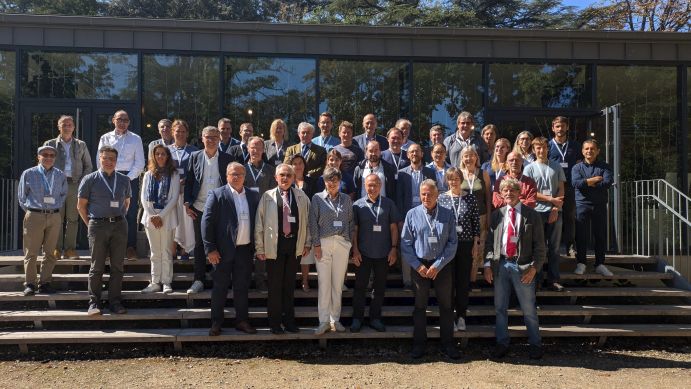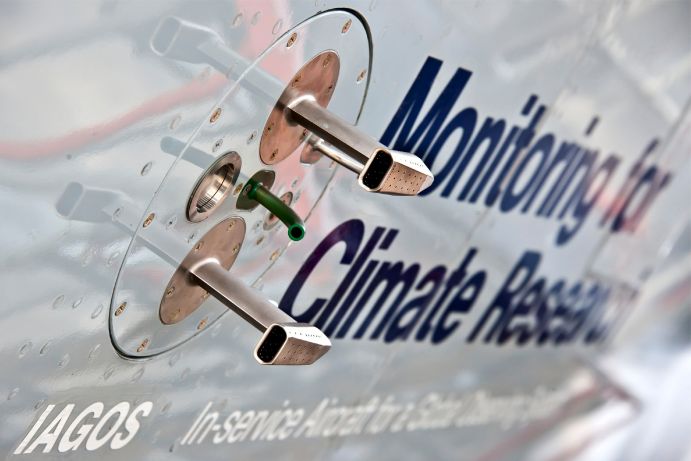Anniversary: IAGOS research infrastructure celebrates 30th anniversary
Since the first measurement flight in 1994, the European research infrastructure IAGOS has developed a measurement technique that is used in commercial airplanes and regularly provide extensive climate data from the atmosphere – with many years of support from the German Federal Ministry of Education and Research (BMBF).

Climate change is having an increasingly severe impact – but how can we measure climate change? Which data are available to us to make well-founded forecasts and projections about future climate dynamics? The European research infrastructure IAGOS (In-service Aircraft for a Global Observing System) was set up to obtain reliable climate data. Today, the IAGOS partners from Germany, France and the United Kingdom celebrated an anniversary: 30 years ago, the first commercial aircraft flew with measuring instruments equivalent to today's IAGOS instruments. From the outset, the aim of this IAGOS precursor was to develop a special standardised measurement technique to be used on airliners, to equip them with measuring instruments, and thus to regularly obtain extensive data from the atmosphere from the ground up to a maximum altitude of 13 kilometres using regular flights. And it has been a success: ten airplanes from the international airlines Lufthansa, Air France, Cathay Pacific, China Airlines, Air Canada, Hawaiian Airlines, Eurowings and Iberia are currently equipped with IAGOS measurement technology and provide data on the Earth's atmosphere in near real-time. Since 2012, the German Federal Ministry of Education and Research (BMBF) has provided almost 19 million euros of funding for the development of the German part – IAGOS-D.
Around 40 representatives from participating research institutions and cooperation partners gathered in Toulouse, France, for the anniversary celebration. During the anniversary celebration, Prof. Andreas Petzold, coordinator of IAGOS Germany at Forschungszentrum Jülich, said: 'Today we can look back on an example of successful cooperation: over the past 30 years, IAGOS has thrived on the cooperation between the participating research institutions, universities and weather services from Germany, France and the United Kingdom. In addition, IAGOS has united science and commercial aviation. This is because regular flights operated by international airlines bring the data directly from the atmosphere to the ground – and into our data centre. Additional, climate-damaging flights are therefore not necessary for the measurements. This is how we obtain valuable data worldwide, which is made available to the entire climate research community through free and open access."

From the initial idea to operation
After many years of development work funded by the BMBF and carried out by the IAGOS members, the infrastructure was handed over two years ago to operational, permanent, self-financed operation. Today, IAGOS is controlled by the operating association IAGOS-AISBL. The measurement data obtained via IAGOS is freely and openly accessible to research and is used by around 300 organisations worldwide. One example of an application is the BMBF-funded Integrated Greenhouse Gas Monitoring System for Germany – ITMS, which is currently being set up. This independent monitoring system is designed to monitor the sources and sinks of greenhouse gases in Germany.
What is a European research infrastructure?
Research is increasingly taking place across national borders. So-called research infrastructures are being created to facilitate research in certain scientific disciplines worldwide. A research infrastructure connects central organisations, such as research institutions, that enable Members of the IAGOS research infrastructure include leading research institutions, universities and meteorological services from Germany, France and the United Kingdom.



